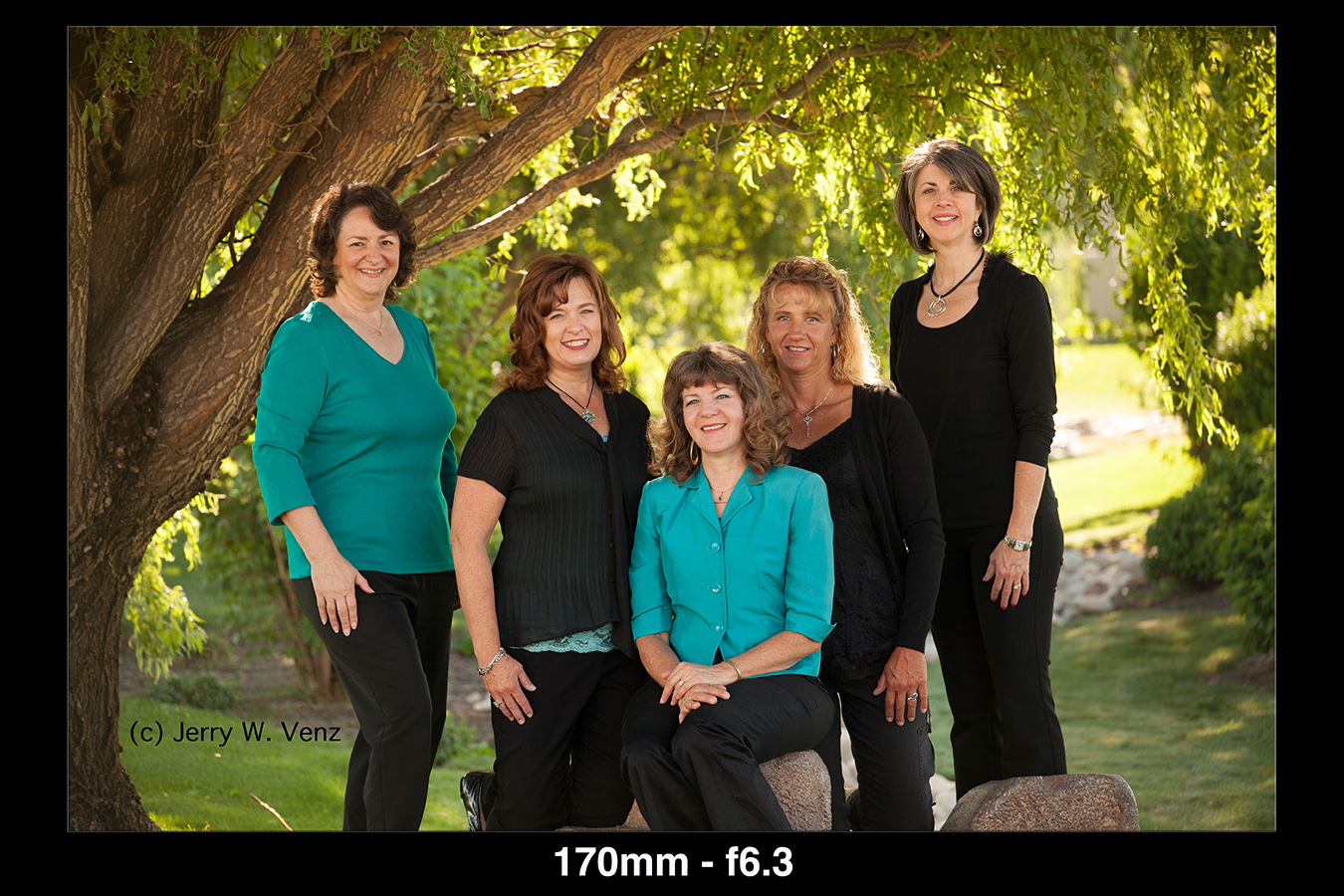The single most creative tool we have when we're creating portraits is lens choice. More than anything else the lens you select will create the look and feel of your portraits. Part of that look and feel is making our subjects look their best. And since ALL LENSES DISTORT REALITY, in some way, you need to know how to use that distortion creatively without optical harm to your subjects!
By far the most egregious harm I'm seeing these days, by many so-called professional photographers, is the use of short focal length lenses when doing group portraits. When using a short focal length--or wide angle--lens you of course must move in closer to your subject to properly fill the frame. A short lens, when used too close will distort your subjects in the worst way--the closest part of your subject to the lens the larger it becomes (known as extension distortion). This happens naturally with ALL lenses but short lenses will Amplify this effect!
It's particularly important to control this distortion when doing group portraits where you have two or more rows of people. A short lens will increase the head sizes and body mass of the people in the front and decrease head sizes of those behind them. So, with that said, what IS a wide angle lens? My definition, based on hard experience, on where extension distortion begins, is that 50mm or wider are lenses to avoid on most family groups. I'm rarely wider than 135mm on ANY family session. For individuals and couples I'm usually at 200mm, sometimes more.
In the example below even in a small group, in several layers, the effect is dramatic between the 50mm lens and the telephoto.
So, what's happening optically here? The two most important types of distortion are: COMPRESSION DISTORTION and EXTENSION DISTORTION.
Extension distortion: and wide angle lenses:
-- optically pull your subject forward and out of the background. The background appears to recede from the subject.
-- magnify the natural effect that ALL lenses do: where the closer an object is to the lens the larger it appears.
-- These lenses create effects that are not pretty on people!
Compression distortion and telephoto lenses:
-- compress the scene the more telephoto you use.
-- optically push your subjects into the background.
-- coupled with wide aperture, will defocus the background and enlarge any Bokeh. The longer the lens the better the Bokeh!
I like to say that the wide angle lens divorces our subjects from their environment while the telephoto lens marries them to their environment.
For individuals I really up the telephoto to at least 200mm and sometimes add a 1.4x extender. With these longer focal lengths I don't need to use the really wide apertures (like f1.2 to f2.8) to get great Boken in my backgrounds. Those apertures would jeopardize the depth of field I need for portraits--for an individual I most often use f4.5 and I get images like these:
When my students tell me that these longer telephoto zooms are expensive I advise that they should save money on the camera body and invest in great glass first, since you can always move up to a full frame body later and take the glass with you!
Have questions just ask. 'Til next week…
Author: Jerry W. Venz, PPA Certified, Master, Craftsman
Training site: http://www.LightAtTheEdge.com




No comments:
Post a Comment